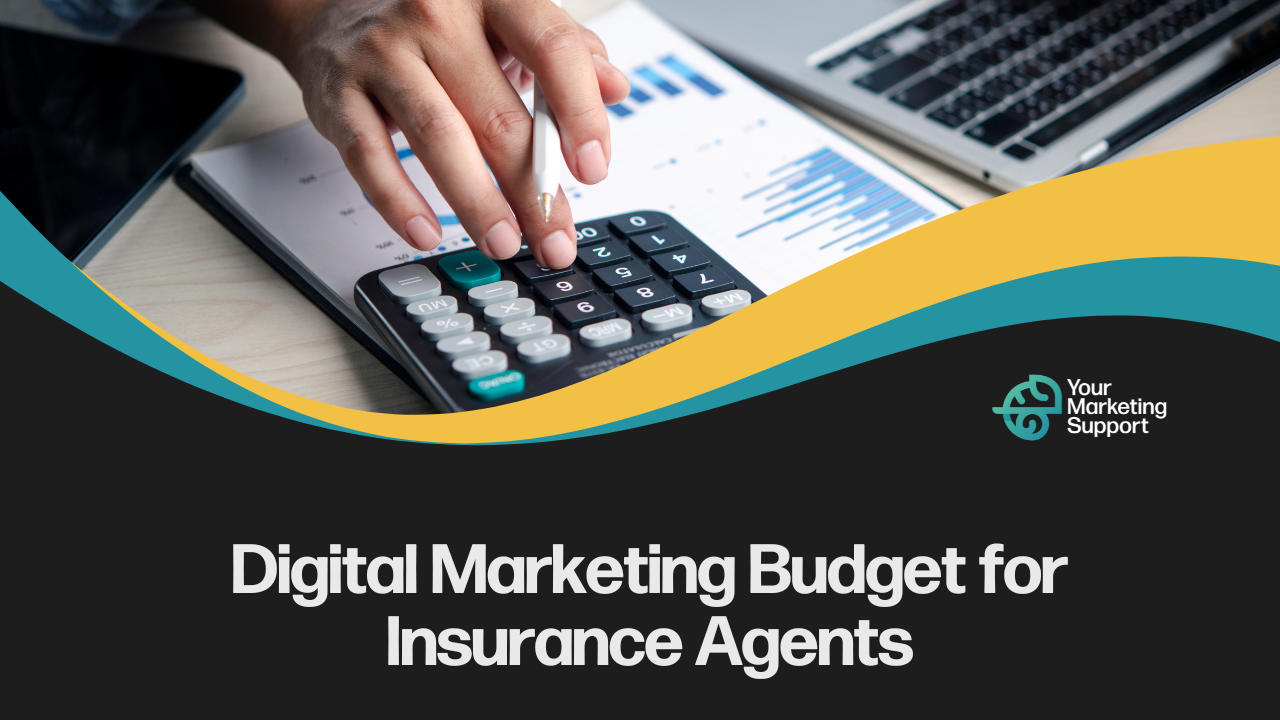Digital Marketing Budget for Insurance Agents
Setting a digital marketing budget can feel like guesswork, especially for insurance agents and FMOs trying to grow in a competitive market. At YMS, we help agencies make every dollar count. Whether you're just starting out or scaling up, this guide breaks down how to size your marketing budget, where to spend it, and how to track results that matter.
Start with Goals and a Baseline
Before you spend a dime, get clear on what you want to achieve.
Define Growth Targets
Start by setting simple, measurable goals:
- Leads per month: How many new prospects do you want?
- Cost per lead (CPL): What’s a reasonable amount to pay for each?
- Customer acquisition cost (CAC): How much can you spend to win a new client?
These numbers guide your digital marketing budget and help you avoid overspending.
Audit Current Traffic, Conversion Rates, and Spend
Look at the performance of your website traffic, conversion rates, and current ad spend. Are you getting leads from organic search? Is your paid traffic converting? This audit shows where your expenses and campaigns are effective and where they're not.
Set a 90-Day and Annual Target
Short-term goals help you test and learn. Long-term goals help you scale. Set a 90-day target to guide your initial spend, then increase toward your annual growth plan.
How to Size the Budget
There’s no one-size-fits-all percentage, but here are strategic starting points.
Percent-of-Revenue: 5–10% for Most Agencies
Most insurance agencies allocate 5–10% of their revenue for marketing spend. If you’re growing aggressively, increase toward the higher end. If you’re maintaining, stay closer to 5%.
Stage-Based: New Agencies May Need More Early
New businesses often need to invest more upfront to build visibility. That means allocating more of your funds to paid channels and foundational resources like your website and SEO.
Agent vs. FMO: Broader Reach Requires Larger Plans
FMOs usually need a bigger digital marketing budget to reach agents across regions. That includes more content, broader ad campaigns, and deeper analytics.
Allocate Across Core Channels
Your digital marketing strategy should cover the channels that drive success.
SEO & Content: Build Durable Inbound Demand
SEO and content marketing help you show up when prospects search for answers. Develop blog posts, landing pages, and educational resources to build trust and drive traffic over time.
PPC (Search/Social): Capture and Test Demand Fast
Pay-per-click ads on Google and social media platforms let you test messages and reach prospects quickly. Use your digital marketing budget to run small tests, then scale what works.
Website, CRO & Analytics: Fix Leaks Before Scaling
If your site doesn’t convert, your budget is wasted. Invest in conversion rate optimization (CRO), fast-loading pages, and clear analytics to track trends.
Plan for Creative, Tech, and Compliance
Don’t forget the behind-the-scenes pieces that make campaigns run smoothly.
Landing Pages, Ad Creative, and Copy Updates
Your digital strategies should include fresh landing pages, ad graphic templates, and copy that speaks to your audience. These assets drive clicks and conversions.
Marketing Tech: GA4, GTM, CRM, Email, and UTM Discipline
Marketing tech matters. Ensure your Google Analytics (GA4 and GA4), CRM, and email tools are set up correctly.
Compliance Review Time and Version Control
Insurance marketing has rules. Set aside time and resources for compliance checks and version control, especially when talking about specific products and carriers.
Build a 90-Day Spend Plan
Start small, learn fast, and adjust.
Test Budgets and Thresholds for Each Channel
Set test budgets for SEO, PPC, and content. Track how each performs before scaling up.
Milestones and KPIs (CTR, CPL, CVR, SQLs)
Use key performance indicators (KPIs) like:
- Click-through rate (CTR)
- Cost per lead (CPL)
- Conversion rate (CVR)
- Sales-qualified leads (SQLs)
These help you know what’s working.
Rules for When to Scale Up or Pause
If a campaign hits your CPL and CVR targets, scale it. If it misses, pause and adjust. Your budget allocation should follow performance, not gut feelings.
Measure ROI and Optimize
Tracking return on investment (ROI) is where the magic happens.
Attribution Checks: Channel vs. Campaign vs. Keyword
Know where your leads come from. Is it Google Ads? A blog post? A specific keyword? Attribution helps you spend smarter.
Weekly Reviews; Monthly Reallocation Based on Winners
Review performance weekly. Reallocate your digital marketing budget monthly based on what’s driving results.
Forecast Next Quarter Using Proven Cost/Return
Use past data to plan future spend. If SEO previously brought in leads at $50 each, that figure can serve as a baseline for evaluating future performance.
FAQs
How much should my digital marketing budget be?
Many agencies start at 5–10% of revenue. Your marketing budget should reflect your goals, market size, and how fast you want to grow.
What if I’m just getting started?
Focus your digital marketing strategies on high-impact basics: a strong website, SEO content, and a small PPC test to learn fast.
Where should most of the budget go first?
Early on, direct your digital budget to landing pages, web content, and one paid channel that matches your audience’s intent.
How soon will I see results?
With a focused marketing budget, PPC can show signals in weeks. SEO builds over months. Measure weekly and adjust monthly.
How can YMS help me manage my digital marketing budget?
YMS designs the plan, sets tracking, and reallocates spend toward what works, so your budget allocation drives steady, reliable growth.
Grow Your Business Without Busting the Bank
Your digital marketing budget isn’t just a number, it’s a growth engine. With clear goals, smart allocation, and consistent tracking, you can turn spend into predictable results. At YMS, we help insurance agents and FMOs right-size their budgets and make every dollar do its job.
Ready to build a marketing budget that works? Contact YMS today to get started.
